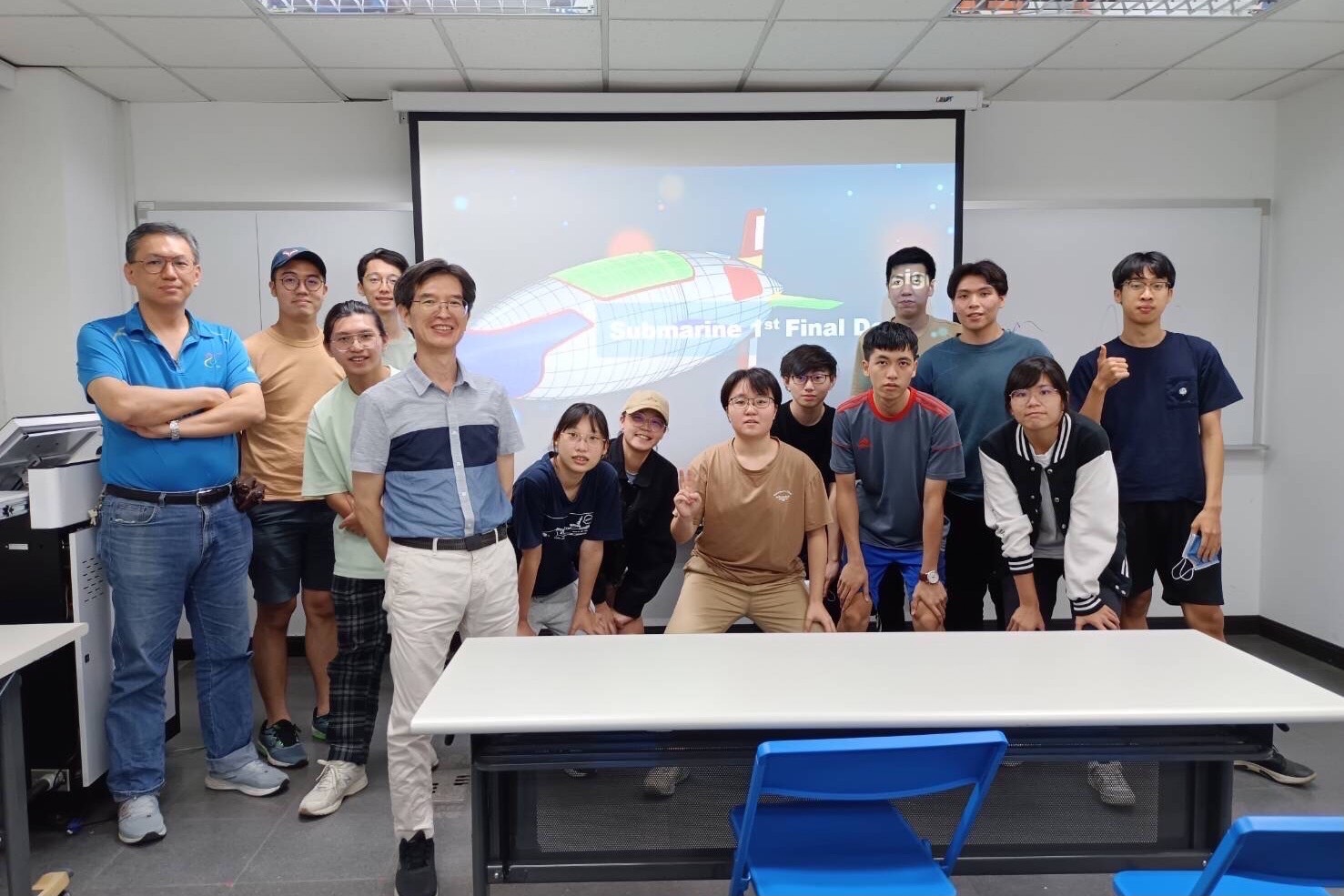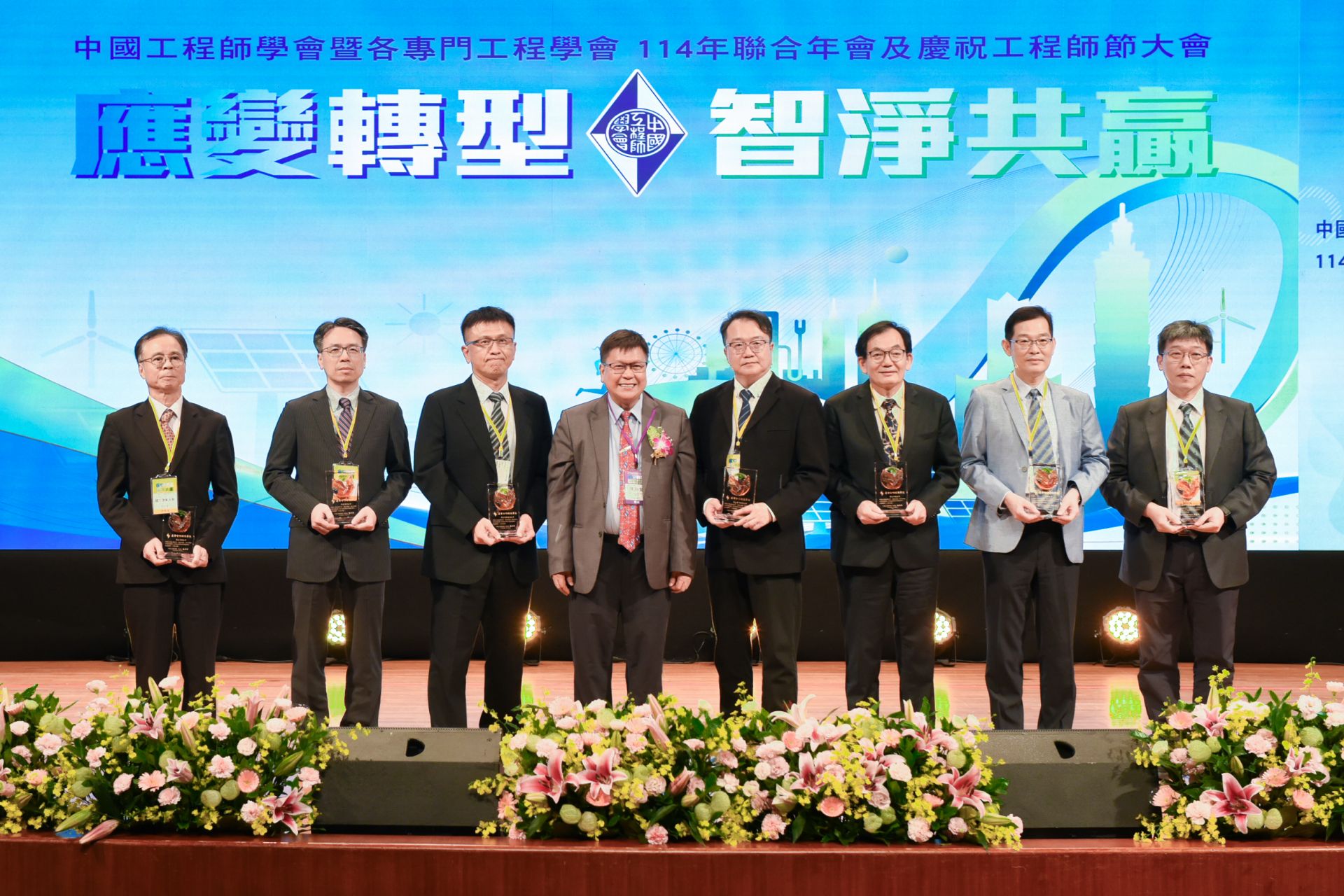SDG9
Field Testing of National Cheng Kung University's AI Nursing Assistant Earns High Praise from Nurses.
Written by Elysee Chung. Image credit to NCKU News Center.
Nursing staff shortages, long working hours, and heavy workloads are significant issues. Wang Jhing-Fa (王駿發) is an emeritus Professor from the Department of Electrical Engineering (EE) at National Cheng Kung University (NCKU). Under Wang’s leadership, the CMICSD Laboratory has developed healthcare service robots and systems utilizing smart technology (AIoTBR) and Chat GPT. The robots feature environmental navigation, and meal delivery logistics; while the software systems for computers and mobile phones offer drug identification, interactive patient dialogues, and contactless physiological measurements, totaling eight functions. These innovations have been tested for over a year in Ward 8A of NCKU Hospital. With the support of these eight functions, the total daily working time for nurses has been reduced from the original 100 minutes to between 33 minutes, improving efficiency more than threefold and achieving a satisfaction rate of over 90%.
On May 21, the CMICSD Laboratory demonstrated their healthcare service robots and software systems at the EE department building on Tzu-Chang Campus. This presentation showcased how integrating artificial intelligence, the Internet of Things, big data, and robotics can effectively reduce the workload of nurses. Distinguished guests included Jiang Meng-Hsueh (江孟學), Director of the EE Department; Ho Chien-Liang (何建良), Director of Ward 8A at the NCKU Hospital; Tseng Yu-Jun (曾裕峻), General Manager of the collaborating company, Exentric Technology Corp.; and Tseng Feng-Mei (曾鳳美), Head Nurse of Ward 8A.
Jiang remarked that Wang has been dedicated to connecting technology with people for decades. Given the realities of declining birth rates and an aging population, it is increasingly impractical to rely on young people to care for the elderly. Therefore, the introduction of service robots into healthcare settings will be a valuable aid. Ho pointed out that there is a significant shortage of nursing staff, and delegating highly repetitive and low-skill tasks to robots will create a win-win situation for both technology and the healthcare field.
Wang has been exploring how technology can enhance human well-being. Over the years, his team has developed healthcare service robots and software to help nurses focus on professional care. Field tests received praise from nurses, and Wang’s team aims to expand their use to reduce nurses’ workload.
In his presentation, Wang outlined the four main functions healthcare service robots: environmental navigation, routine task reminders, health education promotion, and meal logistics. The four software for computers or mobile phones includes drug identification, nurses’ ward round records assistance, interactive patient dialogues, and contactless physiological measurements. The robots are commercially available products, while all the software systems were designed and developed by Wang’s team. The key highlights are interactivity, convenience, and user-friendly operation.
The four main functions can be directly operated via the robot’s screen. Users can set the volume, playback speed, walking speed, and route arrangement. Considering the needs of patients of different nationalities, environmental navigation is available in six languages: Mandarin, Taiwanese, English, Indonesian, Thai, and Vietnamese.
Managing the four software applications for computers or phones is straightforward. For drug identification, the user can snap a photo of the tablet or capsule using the mobile or computer system, and within about 20 seconds, the screen reveals the generic name of the drug. For contactless physiological measurements, the user merely needs to face the camera on the computer system interface, and within 40 seconds, the system captures vital signs such as heart rate, respiration, blood pressure, blood oxygen levels, and body temperature. For interactive dialogue, user can speak into the phone, and within 5 to 10 seconds, the response text pops up on the screen. The responses are drawn from databases maintained by the Ministry of Health and Welfare and other medical systems. Finally, for the nurses’ ward round records assistance, medical staff can use the mobile software to verbally input the content. Within moments of recording completion, the system automatically transcribes it. Once the nurse verifies its accuracy, it automatically generates a nursing record.
Tseng, the head nurse of Ward 8A, highly praised the robots and software, calling them “great helpers.” Regarding environmental navigation, there are 25 nurses in the surgical Ward 8A, each with an average distribution of clinical duties. For example, during the day shift, a nurse might need to provide introductions 3 or 4 times a day. If there is a high volume of admissions and discharges on that day, and multiple groups are handled by the same nurse, that nurse might have to repeat the environmental introduction over 10 times in a single day. Health education and routine task reminders are quite similar. These repetitive tasks consume valuable time, extending the nurses’ work hours, frequently leading to overtime.
Tseng is also very impressed with the drug identification function. When patients are hospitalized, nurses need to be aware of their daily medication routines and often ask patients to bring their own medications, which usually come as loose pills. Nurses then have to contact pharmacists for identification, porters for delivery, and doctors to issue prescriptions. The process takes 2 to 3 hours on average. However, with the help of the AI drug identification function, responses are available within 2 to 3 seconds, including dosage information.
Wang’s team conducted a survey among 25 nurses in the surgical ward at NCKU Hospital. According to the results, 98% of the nurses believed that the environmental navigation function effectively reduces their workload. Additionally, 90% felt that routine task reminders alleviated their workload, while 92% agreed that the health education videos, and meal logistics functions were helpful in reducing their burden. The ward round recording function received an 86% approval rate, and the drug identification function was agreed upon by 78% of the nurses. All respondents agreed that “the robots can be integrated into daily work processes,” “they will continue to use service robots,” and “they look forward to further expanding the robots’ functions.”
Nursing staff shortages, long working hours, and heavy workloads are significant issues. Wang Jhing-Fa (王駿發) is an emeritus Professor from the Department of Electrical Engineering (EE) at National Cheng Kung University (NCKU). Under Wang’s leadership, the CMICSD Laboratory has developed healthcare service robots and systems utilizing smart technology (AIoTBR) and Chat GPT. The robots feature environmental navigation, and meal delivery logistics; while the software systems for computers and mobile phones offer drug identification, interactive patient dialogues, and contactless physiological measurements, totaling eight functions. These innovations have been tested for over a year in Ward 8A of NCKU Hospital. With the support of these eight functions, the total daily working time for nurses has been reduced from the original 100 minutes to between 33 minutes, improving efficiency more than threefold and achieving a satisfaction rate of over 90%.
On May 21, the CMICSD Laboratory demonstrated their healthcare service robots and software systems at the EE department building on Tzu-Chang Campus. This presentation showcased how integrating artificial intelligence, the Internet of Things, big data, and robotics can effectively reduce the workload of nurses. Distinguished guests included Jiang Meng-Hsueh (江孟學), Director of the EE Department; Ho Chien-Liang (何建良), Director of Ward 8A at the NCKU Hospital; Tseng Yu-Jun (曾裕峻), General Manager of the collaborating company, Exentric Technology Corp.; and Tseng Feng-Mei (曾鳳美), Head Nurse of Ward 8A.
Jiang remarked that Wang has been dedicated to connecting technology with people for decades. Given the realities of declining birth rates and an aging population, it is increasingly impractical to rely on young people to care for the elderly. Therefore, the introduction of service robots into healthcare settings will be a valuable aid. Ho pointed out that there is a significant shortage of nursing staff, and delegating highly repetitive and low-skill tasks to robots will create a win-win situation for both technology and the healthcare field.
Wang has been exploring how technology can enhance human well-being. Over the years, his team has developed healthcare service robots and software to help nurses focus on professional care. Field tests received praise from nurses, and Wang’s team aims to expand their use to reduce nurses’ workload.
In his presentation, Wang outlined the four main functions healthcare service robots: environmental navigation, routine task reminders, health education promotion, and meal logistics. The four software for computers or mobile phones includes drug identification, nurses’ ward round records assistance, interactive patient dialogues, and contactless physiological measurements. The robots are commercially available products, while all the software systems were designed and developed by Wang’s team. The key highlights are interactivity, convenience, and user-friendly operation.
The four main functions can be directly operated via the robot’s screen. Users can set the volume, playback speed, walking speed, and route arrangement. Considering the needs of patients of different nationalities, environmental navigation is available in six languages: Mandarin, Taiwanese, English, Indonesian, Thai, and Vietnamese.
Managing the four software applications for computers or phones is straightforward. For drug identification, the user can snap a photo of the tablet or capsule using the mobile or computer system, and within about 20 seconds, the screen reveals the generic name of the drug. For contactless physiological measurements, the user merely needs to face the camera on the computer system interface, and within 40 seconds, the system captures vital signs such as heart rate, respiration, blood pressure, blood oxygen levels, and body temperature. For interactive dialogue, user can speak into the phone, and within 5 to 10 seconds, the response text pops up on the screen. The responses are drawn from databases maintained by the Ministry of Health and Welfare and other medical systems. Finally, for the nurses’ ward round records assistance, medical staff can use the mobile software to verbally input the content. Within moments of recording completion, the system automatically transcribes it. Once the nurse verifies its accuracy, it automatically generates a nursing record.
Tseng, the head nurse of Ward 8A, highly praised the robots and software, calling them “great helpers.” Regarding environmental navigation, there are 25 nurses in the surgical Ward 8A, each with an average distribution of clinical duties. For example, during the day shift, a nurse might need to provide introductions 3 or 4 times a day. If there is a high volume of admissions and discharges on that day, and multiple groups are handled by the same nurse, that nurse might have to repeat the environmental introduction over 10 times in a single day. Health education and routine task reminders are quite similar. These repetitive tasks consume valuable time, extending the nurses’ work hours, frequently leading to overtime.
Tseng is also very impressed with the drug identification function. When patients are hospitalized, nurses need to be aware of their daily medication routines and often ask patients to bring their own medications, which usually come as loose pills. Nurses then have to contact pharmacists for identification, porters for delivery, and doctors to issue prescriptions. The process takes 2 to 3 hours on average. However, with the help of the AI drug identification function, responses are available within 2 to 3 seconds, including dosage information.
Wang’s team conducted a survey among 25 nurses in the surgical ward at NCKU Hospital. According to the results, 98% of the nurses believed that the environmental navigation function effectively reduces their workload. Additionally, 90% felt that routine task reminders alleviated their workload, while 92% agreed that the health education videos, and meal logistics functions were helpful in reducing their burden. The ward round recording function received an 86% approval rate, and the drug identification function was agreed upon by 78% of the nurses. All respondents agreed that “the robots can be integrated into daily work processes,” “they will continue to use service robots,” and “they look forward to further expanding the robots’ functions.”
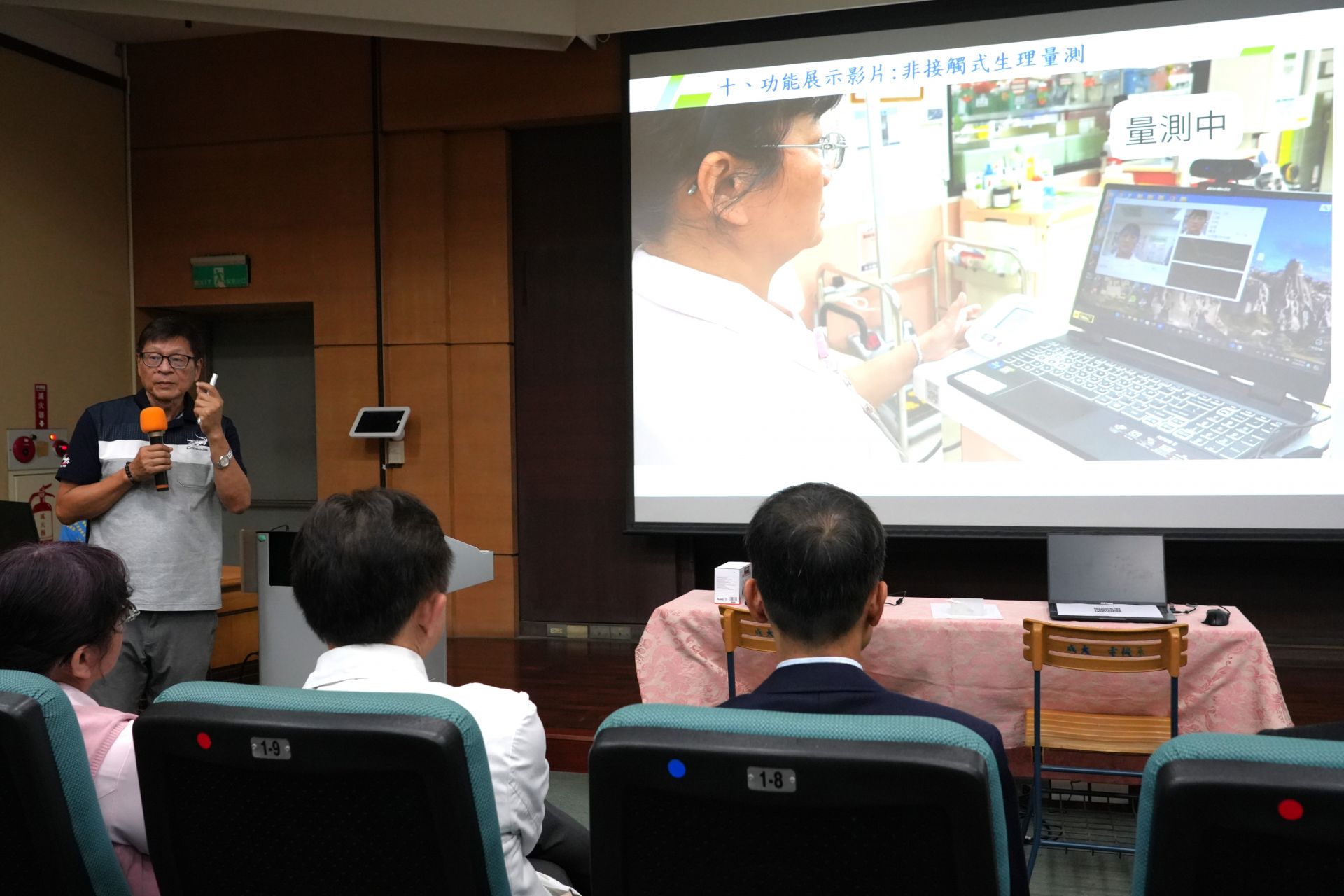
The CMICSD Laboratory of the EE Department at NCKU unveils healthcare service robots and software systems.
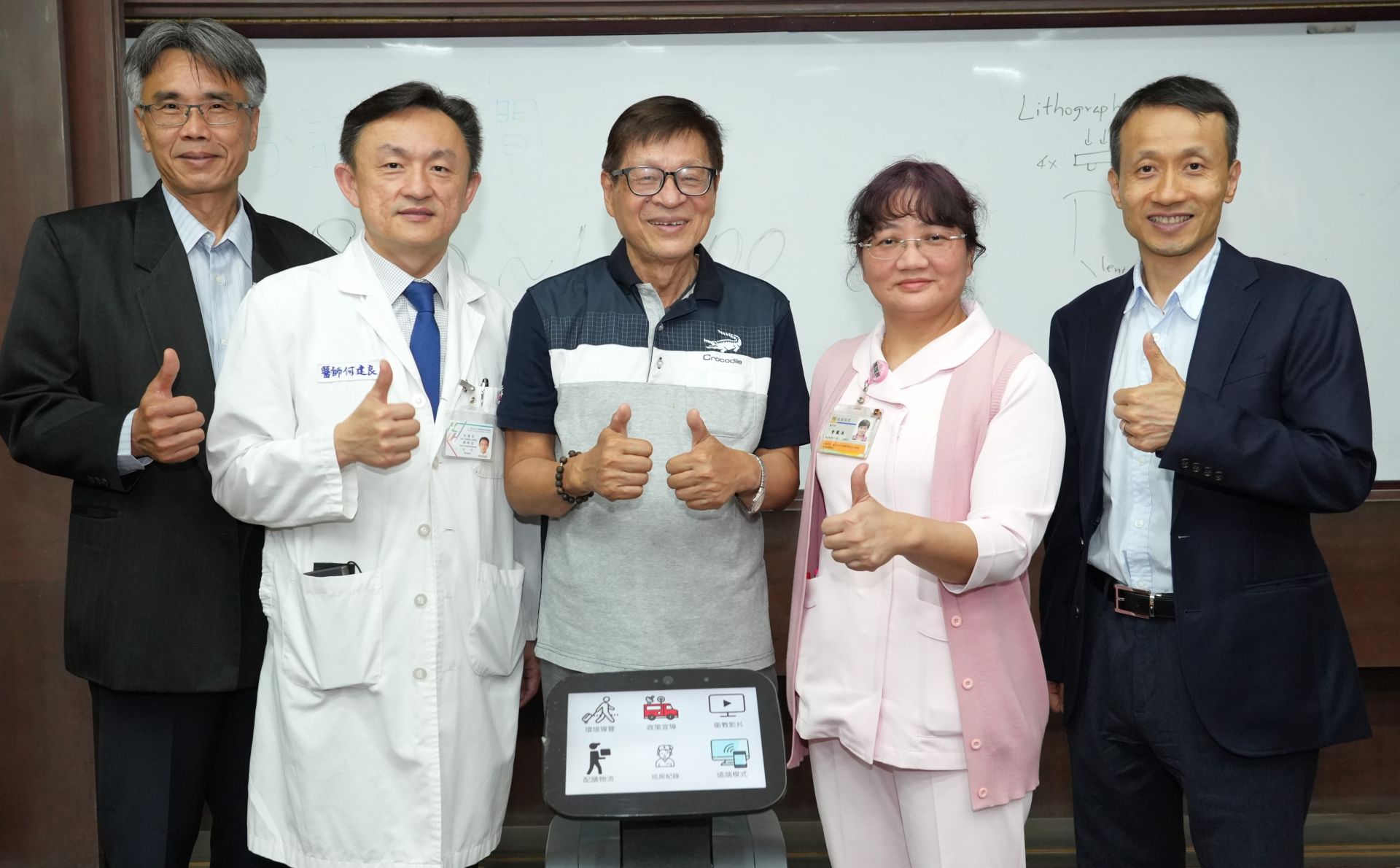
Group photo of distinguished guests at the press conference.
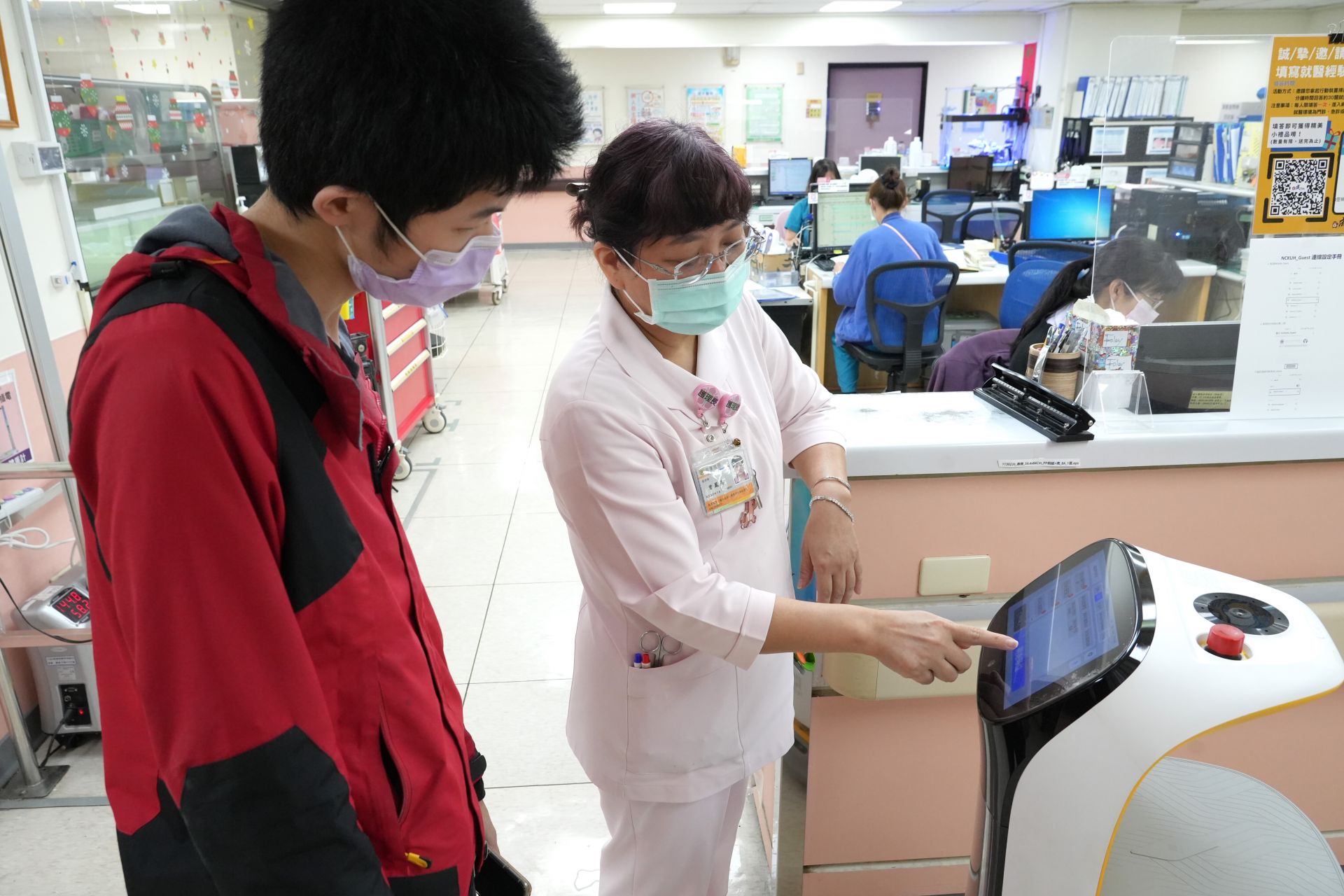
Nurses using the robots to handle or share less specialized tasks.
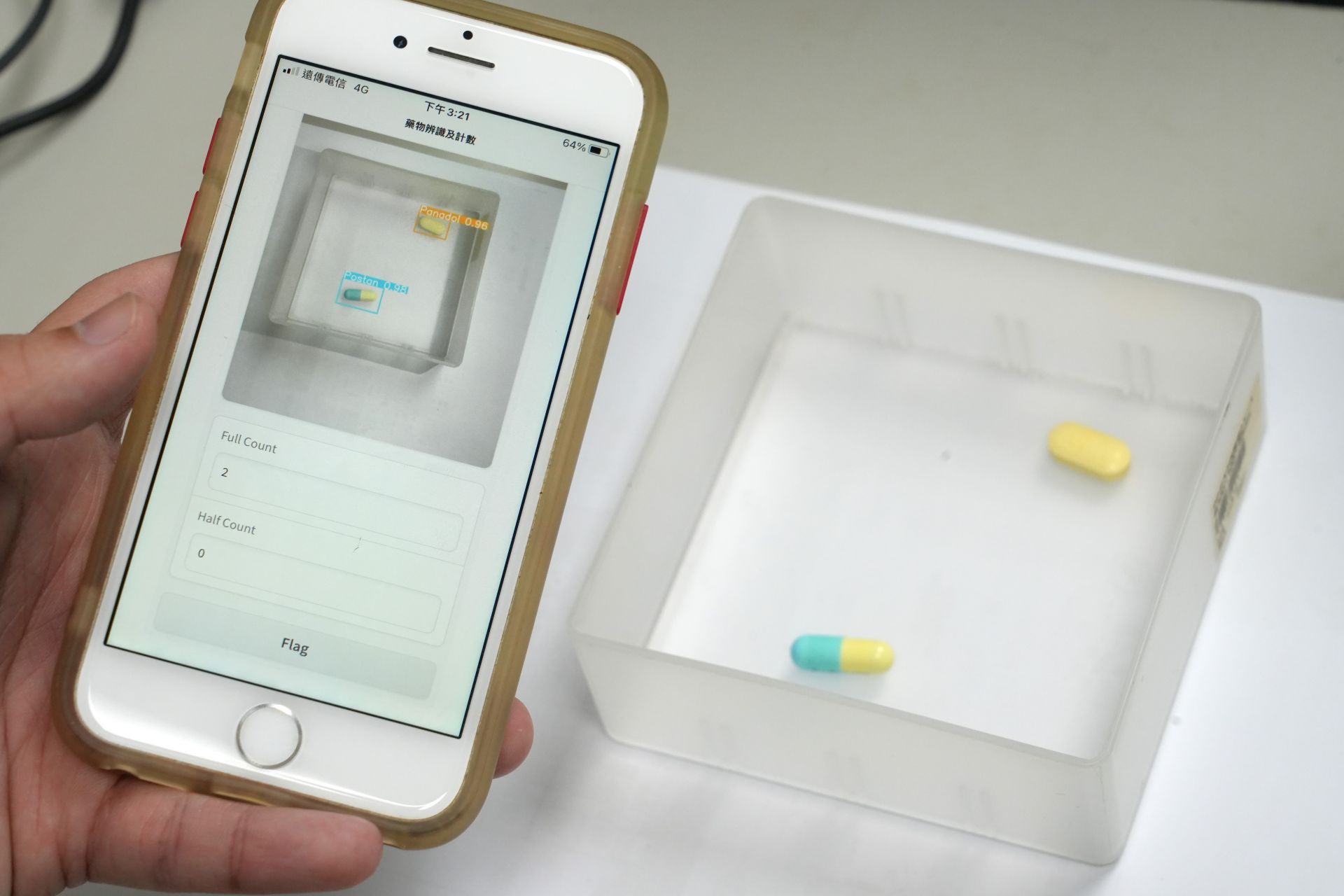
Drug identification system: taking a photo provides the drug name and dosage within seconds.
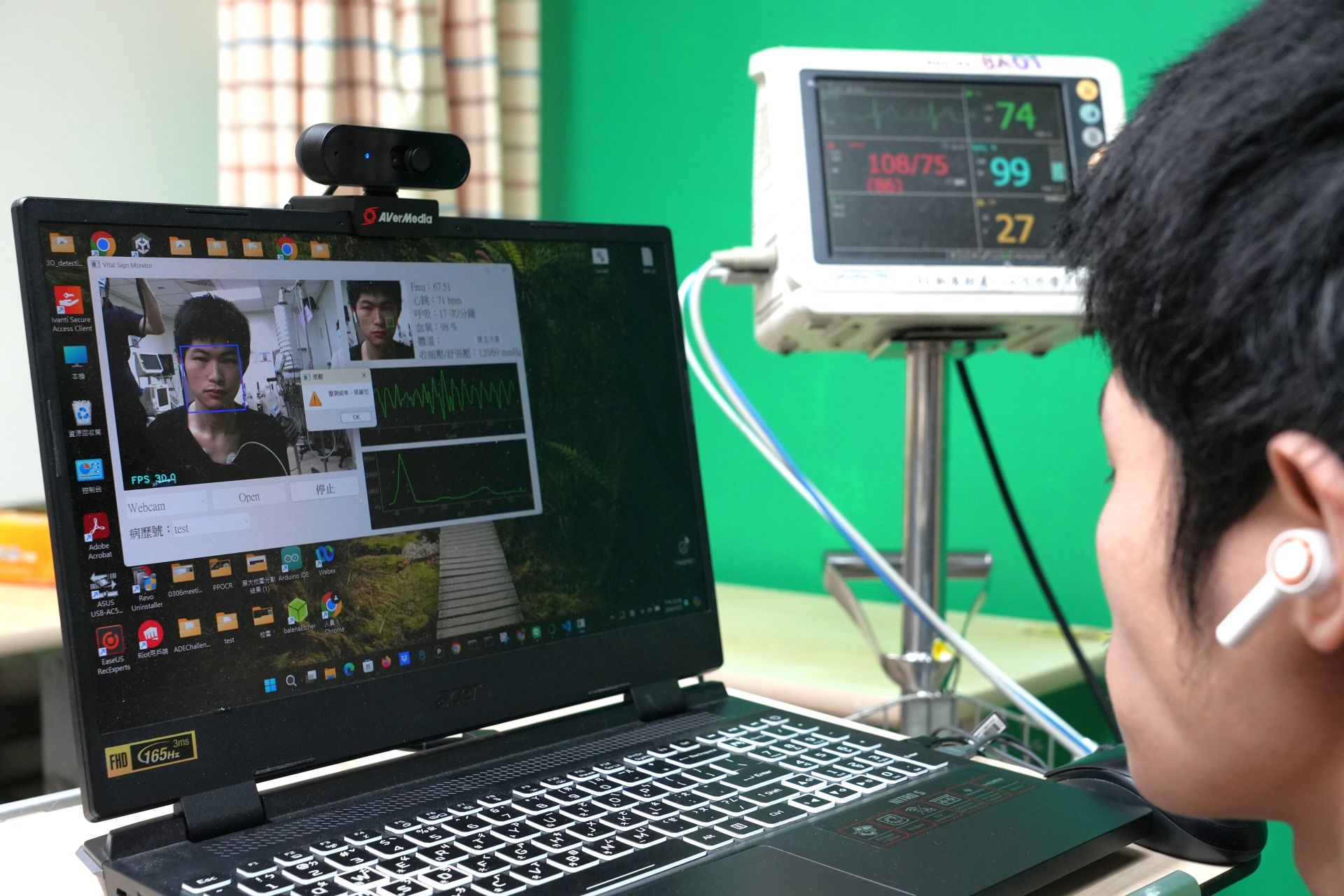
Contactless physiological measurements: facing the camera for about 40 seconds measures heart rate, respiration, blood pressure, blood oxygen, and body temperature.




![[2025 SMART+ Manufacturing Exhibition] NCKU Showcases AI Technologies to Boost Factory Cybersecurity and Digital Transformation](/userfiles/images/20250506075106483.jpg)
